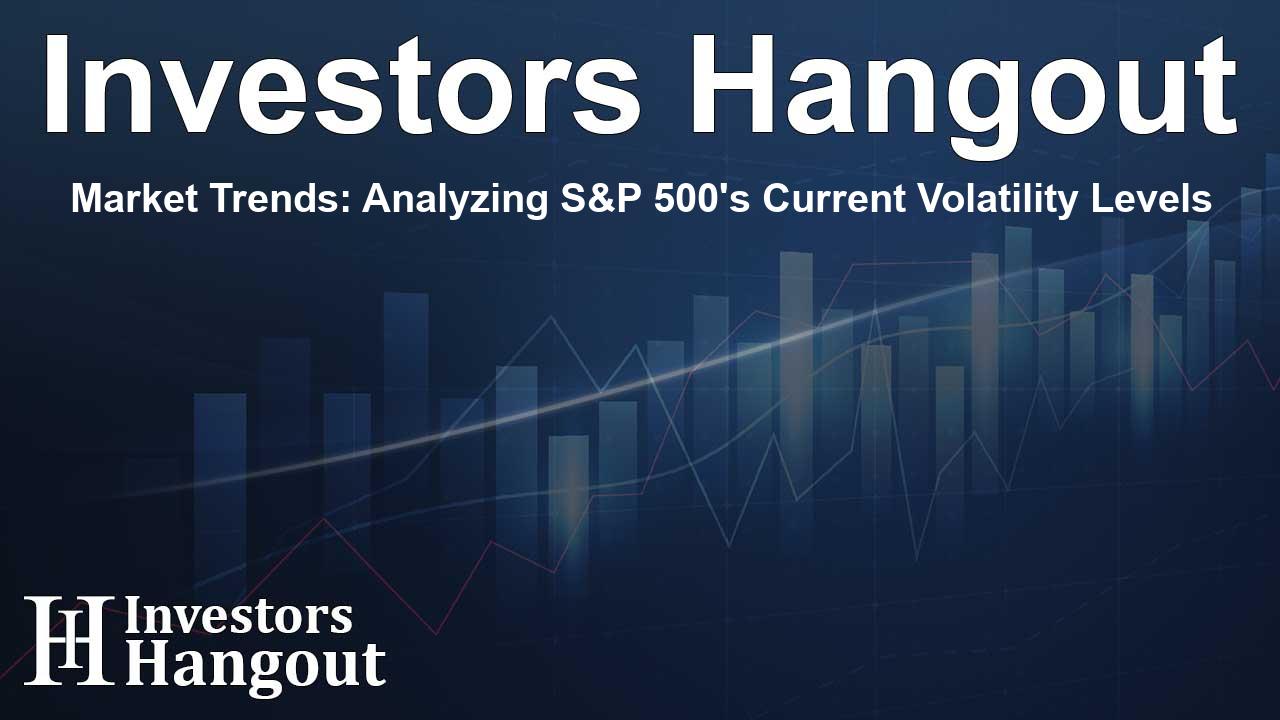Market Trends: Analyzing S&P 500's Current Volatility Levels

Market Trends: Analyzing S&P 500's Current Volatility Levels
The recent performance of stocks appeared optimistic, particularly with the S&P 500 showing a rise of 63 basis points. However, when delving deeper into market activity, the trading volume indicated a lack of momentum, highlighted by only 1.1 million contracts traded in S&P 500 futures. This number reflects one of the lowest trading volumes seen since late December.
On the SPY, over 39 million shares were exchanged, signaling one of the lightest trading sessions since Christmas Eve. Within the Bloomberg 500 index, despite an overall rise, it was marked by a decline in 305 stocks, while merely 193 stocks saw gains. Interestingly, a small batch of technology giants, including Nvidia and Microsoft, were vital in driving advances, collectively making up a staggering 86% of the day's overall increment in values.
Key Contributors to Market Movements
Nvidia's contributions alone tallied to 45%, followed closely by Microsoft at 41%. Other notable mentions included Amazon, contributing 12%, and Netflix at 11%. This concentration of gains among just four prominent stocks painted a picture of a market that, on the surface, appeared thriving but was operating on a weak foundation.
Volatility Metrics Indicate Underlying Weakness
In tandem with these developments, volatility metrics hinted at underlying fragility. The VIX, a popular gauge of market volatility, recorded an uptick, further complemented by a rise in the VVIX, which closed at 100. Historical data reveals an interesting trend with the VIX 1-Day, which previously hovered around 22.5 but closed at 9.9 recently. This substantial drop suggests mechanical resets in implied volatility were the primary drivers behind the latest S&P 500 rallies.
Market Analysis Underpinning Future Trends
The anticipated VIX -1 day spike closely prior to crucial Federal Reserve meetings provides additional insights regarding volatility patterns. Notably, this measure had been grazing the lower bounds around five in the mornings, peaking near nine, indicating limited downside potential for short-term volatility measures. The implications of forthcoming critical events, such as the BOJ meeting and Economic GDP updates, complicate the situation further.
Additionally, observed gatherings of ten-year Treasury yields hinted upward trends, with a rise noted at four basis points to reach 4.61%. Correspondingly, yields for five-year bonds exhibited a similar rise, reflecting broader economic movements and inflationary pressures that could sway market behaviors.
Future Market Outlook with Inflationary Pressures
Meanwhile, inflation swaps for upcoming months remain stable, contrasting with a decline in the two-year swap, seemingly dictated by fluctuations in oil prices. The relationship between oil pricing and inflation expectations indicates a dynamic interplay with significant implications for investor strategies going forward.
Conclusions on S&P 500's Current Position
The current state of the S&P 500 indicates heightened caution moving forward. The concentration of gains among a scant few stocks, coupled with diminished trading volumes and varying volatility metrics, suggests that there may not be substantial room for further growth without broader participation across a more extensive range of securities.
As investors, understanding the delicate balancing act within market indicators and forthcoming significant economic discussions will be key to navigating these unpredictable waters. Keeping an eye on both volatility patterns and volume trends in the S&P 500 can yield critical insights into future investment decisions.
Frequently Asked Questions
What does the recent rise in the S&P 500 indicate?
The rise reflects a temporary surge largely driven by a few major tech companies, indicating potential underlying weakness.
How significant is the trading volume for S&P 500 futures?
The recent trading volume for S&P 500 futures was notably low, suggesting a lack of market engagement among investors.
Why are volatility metrics important in market analysis?
Volatility metrics help gauge market sentiment and can signal turning points in market trends, impacting investment strategies.
What role do Treasury yields play in market movements?
Treasury yields reflect expectations for economic growth and inflation, influencing investment decisions across various asset classes.
How can investors prepare for upcoming economic events?
Investors should stay informed on significant economic indicators and market conditions to adapt their portfolios accordingly, especially in volatile times.
About The Author
Contact Lucas Young privately here. Or send an email with ATTN: Lucas Young as the subject to contact@investorshangout.com.
About Investors Hangout
Investors Hangout is a leading online stock forum for financial discussion and learning, offering a wide range of free tools and resources. It draws in traders of all levels, who exchange market knowledge, investigate trading tactics, and keep an eye on industry developments in real time. Featuring financial articles, stock message boards, quotes, charts, company profiles, and live news updates. Through cooperative learning and a wealth of informational resources, it helps users from novices creating their first portfolios to experts honing their techniques. Join Investors Hangout today: https://investorshangout.com/
The content of this article is based on factual, publicly available information and does not represent legal, financial, or investment advice. Investors Hangout does not offer financial advice, and the author is not a licensed financial advisor. Consult a qualified advisor before making any financial or investment decisions based on this article. This article should not be considered advice to purchase, sell, or hold any securities or other investments. If any of the material provided here is inaccurate, please contact us for corrections.
